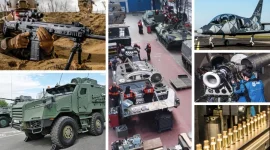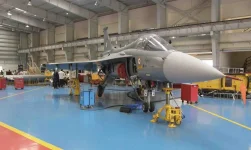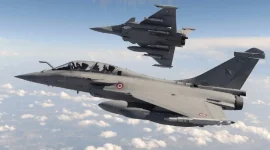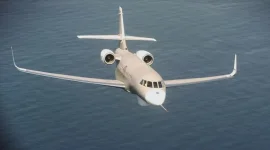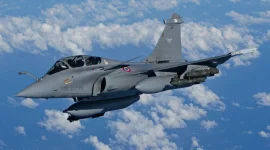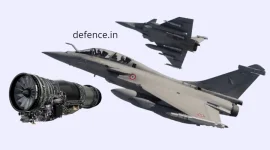The Indian Navy's ambition to equip its new fleet of 26 Rafale Marine fighter jets with the indigenous Uttam Active Electronically Scanned Array (AESA) radar has been halted following significant reservations from the aircraft's French manufacturer, Dassault Aviation.
Citing substantial technical, financial, and intellectual property rights (IPR) challenges, Dassault has persuaded the Indian Navy to proceed with the original French-made Thales RBE2 AESA radar, marking a pragmatic compromise between indigenous defence goals and immediate operational readiness.
The decision impacts a landmark deal finalized in April 2025, valued at approximately $7.4 billion, for the procurement of 22 single-seat and four twin-seat Rafale M jets.
These aircraft are crucial for modernizing the air wing of India's aircraft carrier, INS Vikrant, and are scheduled for delivery between 2028 and 2030. The package also includes advanced weaponry such as Meteor air-to-air and Exocet anti-ship missiles.
India's Push for Indigenous Technology
The Indian Navy’s initial proposal was driven by a strategic push for greater self-reliance and technological superiority.The Uttam AESA radar, developed by the DRDO, is considered a next-generation system. It utilizes advanced Gallium Nitride (GaN) technology, which offers superior power efficiency, a longer detection range, and enhanced resistance to electronic jamming compared to the Gallium Arsenide (GaS) technology used in the Rafale's current Thales RBE2 radar.
A key motivation behind the push for the Uttam radar was to simplify the integration of a suite of homegrown weapons. This includes the Naval Anti-Ship Missile-Medium Range (NASM-MR) and the Astra series of beyond-visual-range air-to-air missiles.
Integrating Indian weapons with an Indian radar would provide greater operational autonomy, bypassing the need for French approvals and source codes for software modifications.
Furthermore, standardizing the Uttam radar across its fleet, including the existing MiG-29K and the future Twin Engine Deck-Based Fighter (TEDBF), would streamline maintenance, logistics, and training for the Navy.
Dassault's Case Against Integration
Dassault Aviation outlined several critical obstacles to integrating a third-party radar into the Rafale's highly complex and proprietary architecture.- Technical and Certification Delays: The French firm cautioned that replacing the Thales radar would require extensive modifications to the Rafale's Modular Mission Computer (MMC), the jet's electronic core. This integration would demand an estimated three years of rigorous testing and certification, which would have significantly delayed the operational deployment of the fighters at a time when the Navy urgently needs to replace its aging MiG-29K fleet.
- Cost Overruns: The complex process of re-testing and validating the new radar system for carrier-based operations would have incurred substantial additional costs, pushing the total price of the $7.4 billion deal even higher. For the Indian Navy, operating under strict budgetary constraints, this financial burden was deemed unacceptable.
- Intellectual Property and Proprietary Concerns: The Rafale's systems, including the RBE2 radar and the mission computer, are proprietary technologies. Integrating the Uttam radar would have required Dassault and its partner Thales to share sensitive software interfaces and system data, a move they were unwilling to make to protect their technological and commercial interests.
- Proven System Performance: Dassault argued that the Thales RBE2 AESA radar is a combat-proven and reliable system, with a detection range of over 200 km and seamless compatibility with the Rafale's advanced weapon systems. They maintained that its performance is more than sufficient to meet the Indian Navy's immediate operational requirements.
While the Indian Navy will receive its advanced fighters on schedule, the vision of a Rafale M equipped with a fully indigenous sensor and weapons suite has been deferred.

